Free-falling off an oil rig in a lifeboat isn’t on my typical to-do list as a business reporter.
Nor is an adrenaline-thumping sweep for survivors in the frigid North Sea.
But this is bread and butter work for Aberdeen’s 3t training centre and its revolving door of survival-skills coaching.
In 3t’s hangar-like facility at Dyce, an average 220 people will be trained in safety critical skills every day.
Some will be submerged underwater in a simulated helicopter crash, suited up to fight a gas-fed fire, or asked to perform first-aid inside a wind turbine blade.
Or, like me, invited onto a robotic lifeboat simulator, and instructed on how to bolt from an exploding rig and rescue survivors. Terrifying by the way.
Instructors have you lurching through rough seas at the touch of a button from their control desk.
Then crank up the lightning, alarms sounds and general mayhem as they talk you through steering the chugging lifeboat alongside people to pull them onboard to safety.
This hyper-real experience is added to just about every training module they offer. And it is very effective.
Using its Aberdeen quayside operations, 3t is now the only facility in the world to offer practical and virtual lifeboat training for free fall and twin fall escape scenarios.
80 instructors work to deliver a raft of safety-critical training courses between the two locations and all come with industry experience.
Helicopter escape simulation
These offshore workers face harsh conditions, from severe weather, isolation and the very real risk of explosions on platforms.
There’s also the danger workers flown off to rigs dotted around the North Sea could pitch into its freezing waters.
General manager Jamie Purves, who started his career as a diver, says safety critical training is vital.
And learning in this ultra-realistic setting really drives home the message.
Standing poolside, he breaks down the helicopter exercise as a group of workers strap into a giant robot designed to simulate a crash at sea.
“They do two core exercises, escaping from the helicopter in what we call a partial submerge where the helicopter sinks straight down,” he explains. “And then we will do the capsize whereby the helicopter actually spins.
“As the helicopter is spinning, they all count to seven to wait until the helicopter stops moving.
“At seven they release their seatbelt and escape through the window. They will then do that exercise again with a window in place.
“It’s a build-up from doing a straight sink down, to then capsize, to then jettison their window like they would have to do in real life. It’s progressive each time.”
Hyper-real training experience
On a guided tour of the Dyce training centre you hear accents from around the world.
Teams dangling from ropes, learning how to rig and lift, rescue someone from a tight space, or learning how to fix electrics in dangerous conditions.
There is even a purpose-built replica control room where instructors simulate crisis management and emergency response scenarios.
3t, short for training, technology and transformation, is the UK’s largest training provider for oil, gas, wind and power sectors offering over 500 courses.
Jamie is the general manager for Quayside and Dyce as well as Manchester and Glasgow where 3t has utilities and construction training.
The Dyce facility, founded back in 2009, is 3t’s busiest training centre, offering over 200 courses to 75,000 people annually.
“There has been huge investment in facilities here,” says Jamie. “We are always looking at how best to adapt our training.”
Most recently that includes a multi-million-pound investment in a marine simulator and bespoke electrical training stations for offshore electricians and engineers.
They have also added facilities for water jetting, pressure testing, and a well intervention simulator.
While there is a lot of buzz at the centre around renewables upskilling, Aberdeen training remains largely oil and gas centric for now.
75,000 people trained in Aberdeen every year
“In the north-east of England, it is a lot higher for the renewables split,” says Jamie.
“Up in Aberdeen we are not at 50/50 yet. I would say we are 30/70.
“But we are consciously moving in that sort of direction.”
Future planning for 3t means preparing for this shift and adapting the training on offer in Aberdeen.
“I would say there is a lot of good conversation around what renewables is going to bring,” he says.
“Obviously, the transition to net zero, hydrogen being a big talking point and Aberdeen having that net zero hub is going to be key as well.
“There’s a lot of re-skilling as opposed to training a load of new entrants.
“We are used to delivering a lot of oil and gas centric courses for helicopter escape and sea survival, but we have got a lot of people wanting to transition to the renewables or be available for both.
“Because the skillsets are very similar in a lot of aspects.”
Mental health in the workplace
First aid training is a mainstay for the Dyce centre, and a new module developing skills to deal with mental health in the workplace has gained momentum too. Especially for offshore workers.
“You are working in a remote location, away from family and friends. How does that affect people’s mental health?” says Jamie.
“If it does, how do you deal with that as a manager or as an individual as well?
“People really start to share more about their experiences, so you are getting more out of it.”
Jamie says instructors who don’t love their job won’t last long, but there’s real satisfaction for those who do.
“It has to be something you really love and are passionate about because you can be delivering similar training from week to week, but it’s the people and the engagement that makes it different and exciting,” he says.
“It’s about seeing the difference in the people you get through every day and the journey from when they start to when they finish.
“That’s the buzz about it, that’s the exciting bit.”
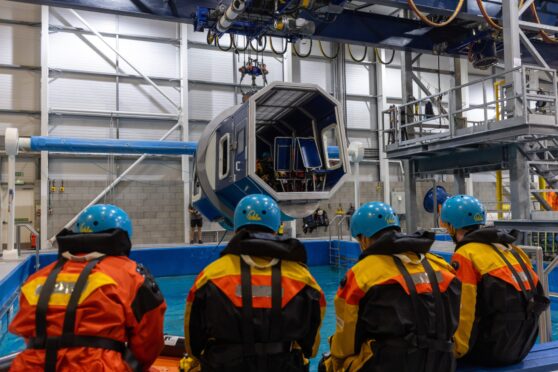
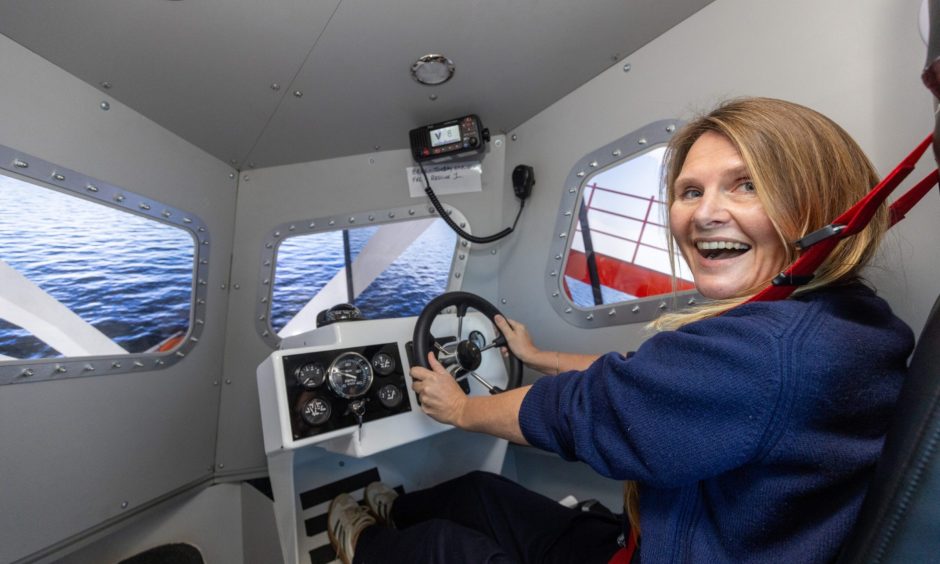
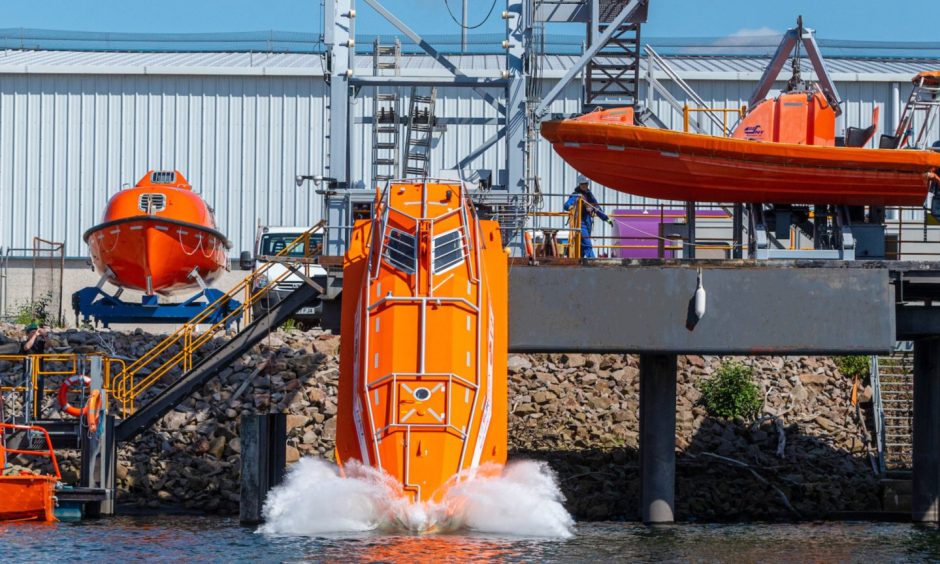

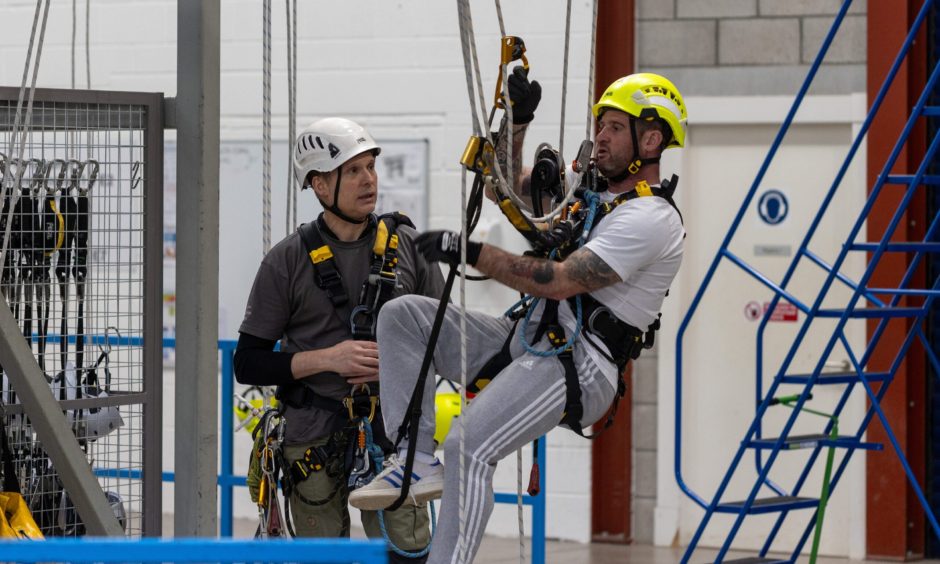
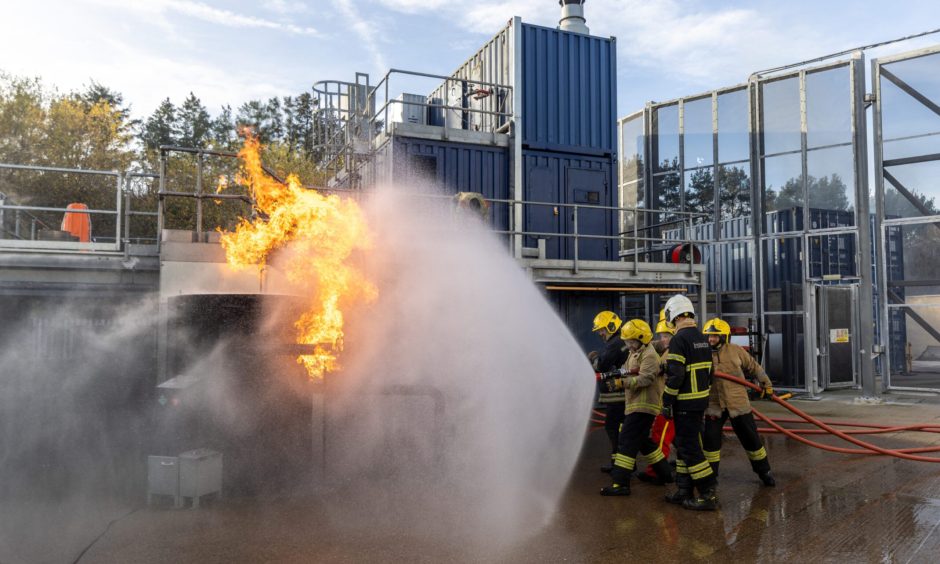
Conversation